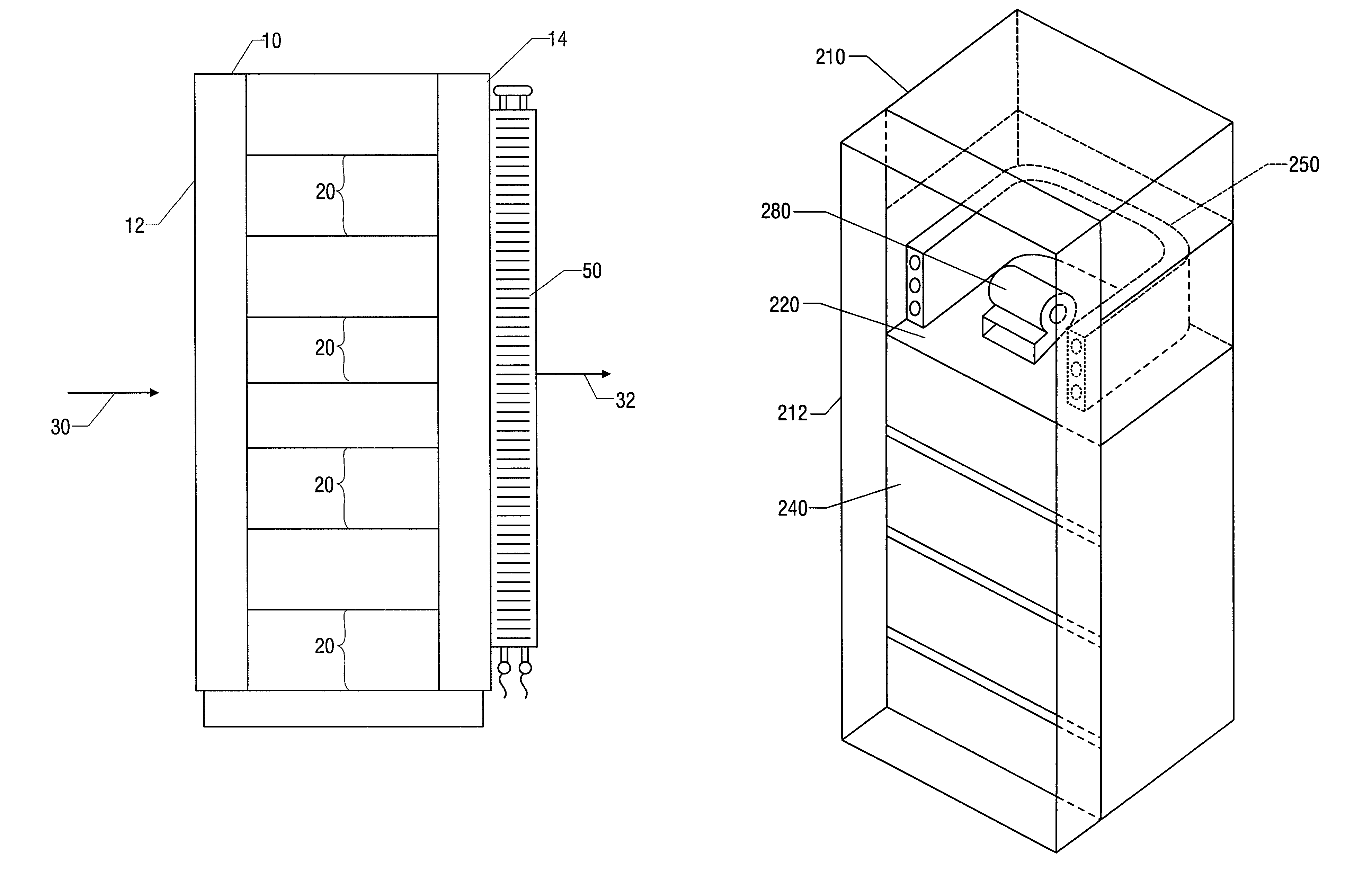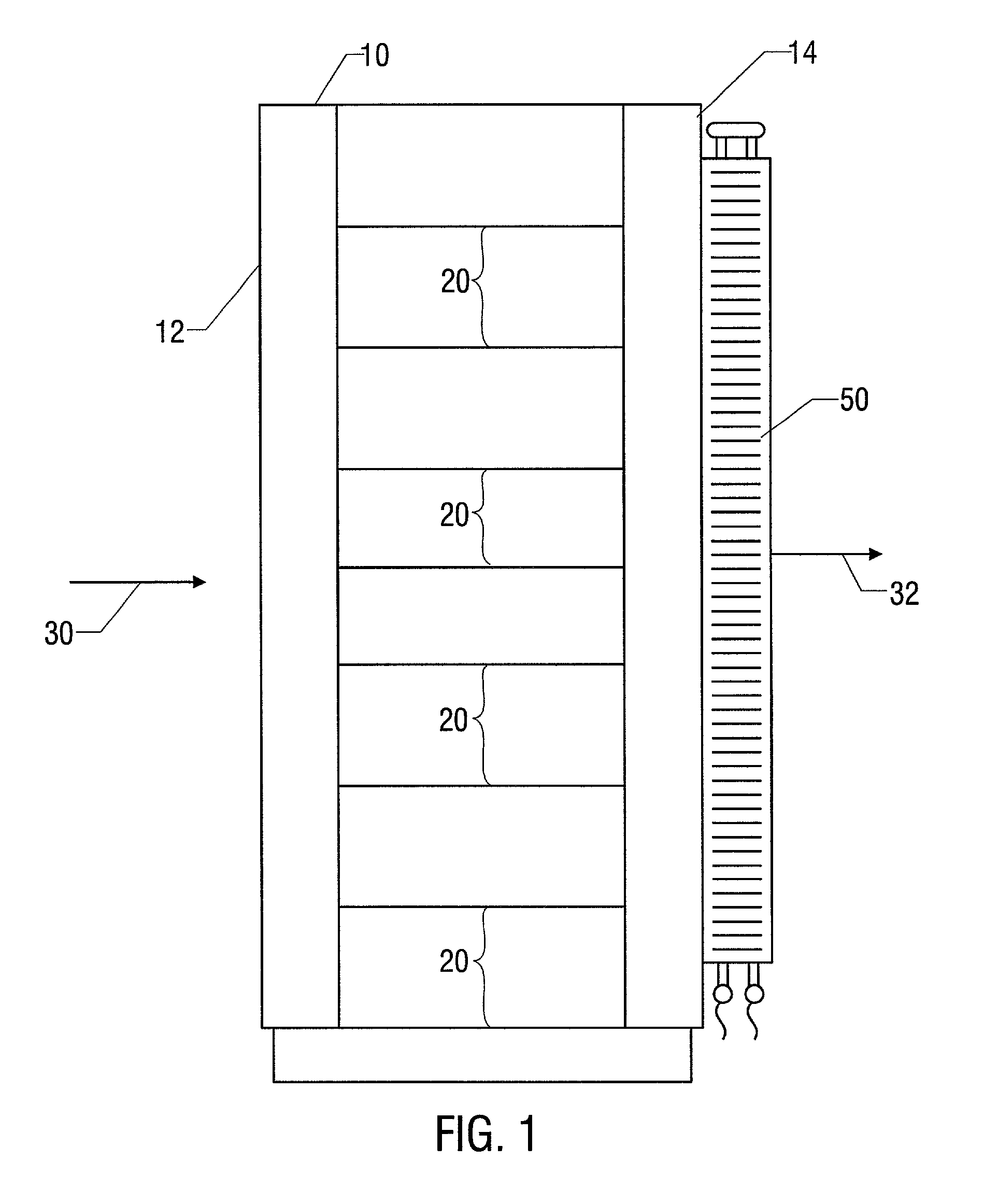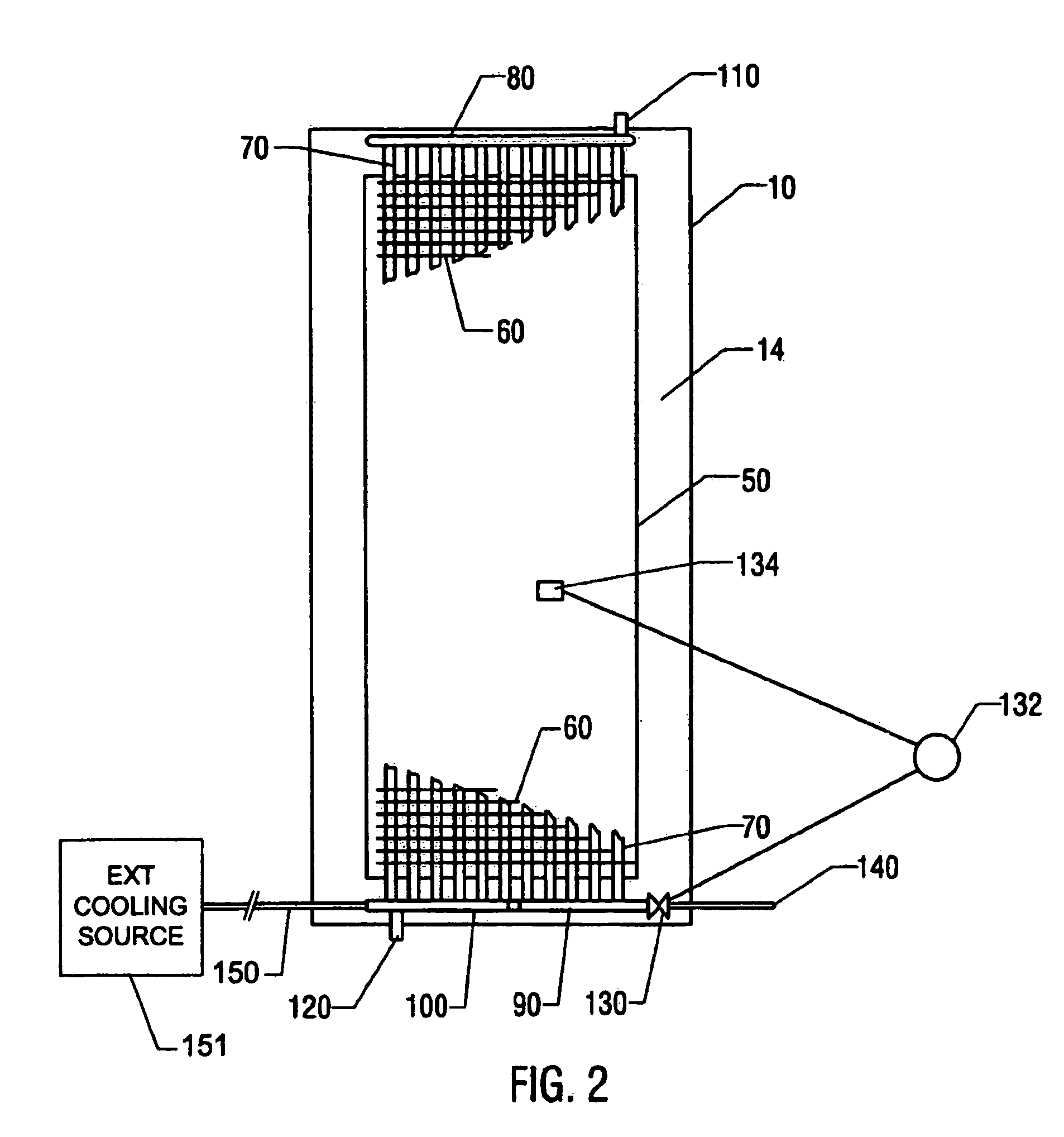Method and apparatus for cooling electronic enclosures
- Summary
- Abstract
- Description
- Claims
- Application Information
AI Technical Summary
Benefits of technology
Problems solved by technology
Method used
Image
Examples
Embodiment Construction
[0021]An apparatus in accordance with the present invention is illustrated in FIG. 1. Electronic equipment, such as computer or telecommunication devices, is housed in a rack enclosure 10. Rack enclosure 10 contains a plurality of equipment mounting racks 20. Mounting racks 20 hold various computer and electronic equipment. Cooling fans integral to the computer equipment draw air 30 from the room, through the front 12 of enclosure 10. The air passes over the electronic equipment mounted in racks 20 and absorbs the heat generated by the electronics. The air 32 flows out the back 14 of enclosure 10 and back into the computer room.
[0022]Because the air used to cool the electronic equipment is returned to the room, the room air conditioning equipment must have adequate capacity to absorb the heat rejected to the room air by the computer equipment. The power dissipation of a typical rack system in use today is approximately 8 kW. However, with the trend of increasingly smaller and faster...
PUM
 Login to View More
Login to View More Abstract
Description
Claims
Application Information
 Login to View More
Login to View More - R&D
- Intellectual Property
- Life Sciences
- Materials
- Tech Scout
- Unparalleled Data Quality
- Higher Quality Content
- 60% Fewer Hallucinations
Browse by: Latest US Patents, China's latest patents, Technical Efficacy Thesaurus, Application Domain, Technology Topic, Popular Technical Reports.
© 2025 PatSnap. All rights reserved.Legal|Privacy policy|Modern Slavery Act Transparency Statement|Sitemap|About US| Contact US: help@patsnap.com



